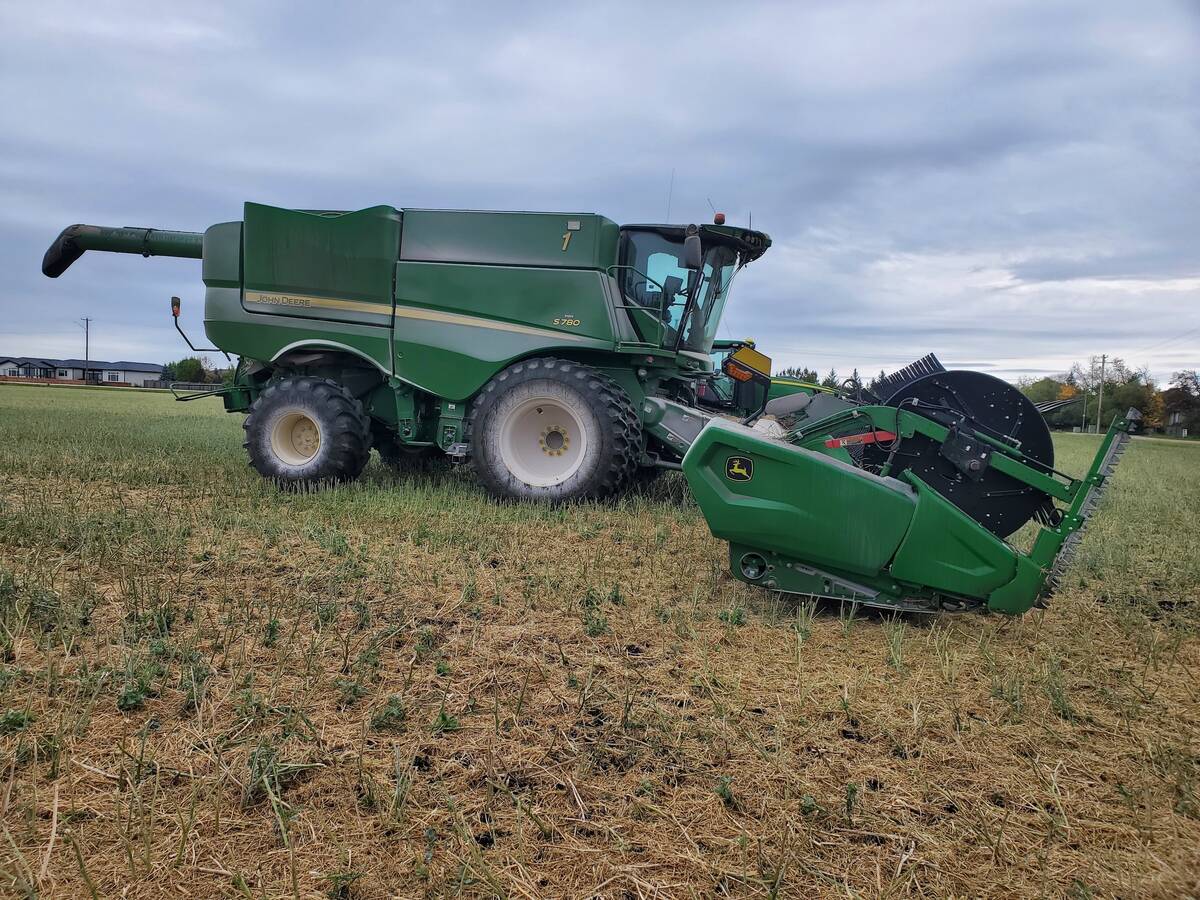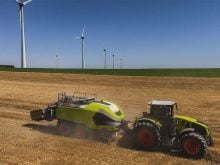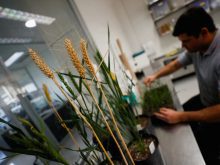Researchers at the University of Saskatchewan in Saskatoon are hoping to make a big splash into the lucrative global market for commercial fish food and protein-based fishmeal replacements.
Lynn Weber, a professor of biomedical sciences at the university’s Western College of Veterinary Medicine, says prairie crops like field peas and fababeans might be ideal sources of protein that could reduce global dependence on fishmeal, a product that is currently produced at a high environmental cost.
“You might not think about aquaculture when you think about Saskatchewan, but we can make (fish) feed or develop it right here using Saskatchewan-grown crops,” said Weber.
Read Also

Powdery mildew can be combine fire risk
Dust from powdery mildew can cause fires in combines.
Using prairie crops like field peas and fababeans to produce fish food would be cheaper, easier and more environmentally friendly than producing fishmeal, she added.
Currently, fishmeal production often involves dragging nets over the ocean floor, collecting fish species that are typically not used for human consumption, and processing the catch into a high-protein feed source that’s used by commercial fisheries.
In addition to causing environmental damage, destroying habitat and contributing to the depletion of many “less-palatable” fish species, fishmeal production is also costly to produce.
Developing plant-based aquaculture feeds “would be cheaper, easier and we already have great expertise in using those ingredients (peas and fababeans) in various feeds,” Weber said.
“So why not develop those feeds here in Saskatchewan and possibly even use them here in Saskatchewan.”
Weber and other researchers at the University of Saskatchewan have been studying the use of plant proteins in animal feed for years.
Thanks in part to their research, field peas grown in Saskatchewan and across Western Canada are a staple ingredient in many manufactured pet foods, particularly dog kibble.
Expanding the use of peas and fababeans into the aquaculture feed market would create new markets for prairie crops and could potentially create a new industry on the Prairies, producing fish food and fish for the global market.
The global fish food market is valued at $21 to $25 billion annually and is growing at a rate of five to 10 percent per year.
Soybean protein is already being used as a replacement for fishmeal in some aquaculture feeds but according to Weber, soy protein is not ideal for commercial fish production.
For starters, rising global demand for soybeans as a human food has driven up its value, making it expensive. In addition, soy contains anti-nutritional compounds that can have a harmful impact on the gut function of some fish species, unless the soybeans are processed to remove the harmful elements.
Weber believes that peas and fababeans would provide a better protein alternative. Research suggests that using novel processing methods such as fermentation with yeast can remove anti-nutritional factors from legumes.
To support their efforts to expand the use of peas and fababeans as alternative ingredients, Weber and her colleagues are hoping to establish a feed testing facility at the university’s Saskatoon campus.
The U of S used to have an aquaculture research facility on campus but the aging facility did not meet standards and has not been in use for several years.
The proposed new facility would be used to develop and test plant- and insect-derived proteins as affordable and environmentally sustainable replacements to fishmeal.
“The testing facility will have some basic research aspects to do with nutrition, eco-toxicology and AI, but basically it will be a contract facility where we hope to bring in industry partners and charge them to develop new feed ingredients and feeds for aquaculture,” Weber said in a recent interview.
Support for the facility has come from industry, government, academic and trade groups around the world, she added.
Weber and fellow researcher Mike Nickerson, a professor in the university’s College of Agriculture and Bioresources, are leading a 10-member multidisciplinary faculty team that is hoping to get the project funded and approved.
The group has already applied for a $3.7 million grant from the Canada Foundation for Innovation. That represents roughly 40 percent of the total $9.3 million that would be needed to establish the new facility at the university’s existing Toxicology Centre.
The remaining funds would be secured through provincial and federal agencies, the university and industry partners.
“The aquaculture industry is on board with this,” Weber said.
“They realize that there’s an absolute need — economically, environmentally and ethically — to replace the current protein source.
“Protein is the number one cost in feed and feed is by far the number one cost in aquaculture production so if you can reduce the protein costs, you’ve got a winning situation.”
If funding is secured, Weber and her team hope the new facility will be up and running by 2025.


















